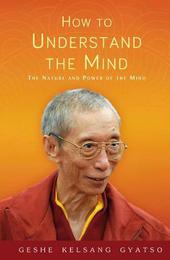
|
How to Understand the Mind: The Nature and Power of the Mind
Paperback / softback
Main Details
| Title |
How to Understand the Mind: The Nature and Power of the Mind
|
| Authors and Contributors |
By (author) Geshe Kelsang Gyatso
|
| Physical Properties |
| Format:Paperback / softback | | Pages:416 | | Dimensions(mm): Height 216,Width 138 |
|
| Category/Genre | Buddhism |
|---|
| ISBN/Barcode |
9781906665821
|
| Classifications | Dewey:294.3444 |
|---|
| Audience | |
|---|
|
Publishing Details |
| Publisher |
Tharpa Publications
|
| Imprint |
Tharpa Publications
|
| Publication Date |
1 August 2014 |
| Publication Country |
United Kingdom
|
Description
'We often say: My mind, my mind. But if someone were to ask us: What is your mind? We would have no correct answer. This is because we do not understand the nature and function of the mind correctly.' - Venerable Geshe Kelsang Gyatso Rinpoche. How to Understand the Mind offers us deep insight into our mind. It shows us how an understanding of our mind's nature and functions can be used to improve our lives practically, in our everyday experience. It begins by guiding us to develop and maintain a light, positive mind. It then explains how to recognize and abandon mental states that harm us, and shows us in how to replace them with peaceful beneficial states. The book goes on to describe different types of mind in detail, revealing the depth and profundity of the Buddhist understanding of the mind. The book concludes with a detailed explanation of meditation, which we use for controlling and transforming our mind until we attain a lasting state of joy, independent of external conditions.
Author Biography
Geshe Kelsang Gyatso is a fully accomplished meditation master and internationally renowned teacher of Buddhism who has pioneered the introduction of modern Buddhism into contemporary society. He is the author of 22 highly acclaimed books that perfectly transmit the ancient wisdom of Buddhism to our modern world. He has also founded over 1200 Kadampa Buddhist centres and groups throughout the world.
Reviews'Astonishingly, what has been produced here is actually a new and self-explanatory Buddhist commentarial text composed in English.' - Buddhist Studies Review
|